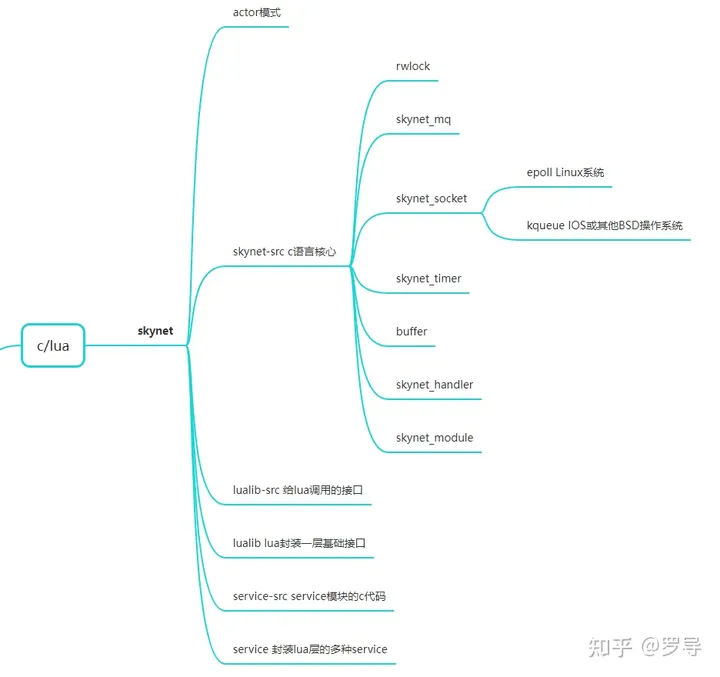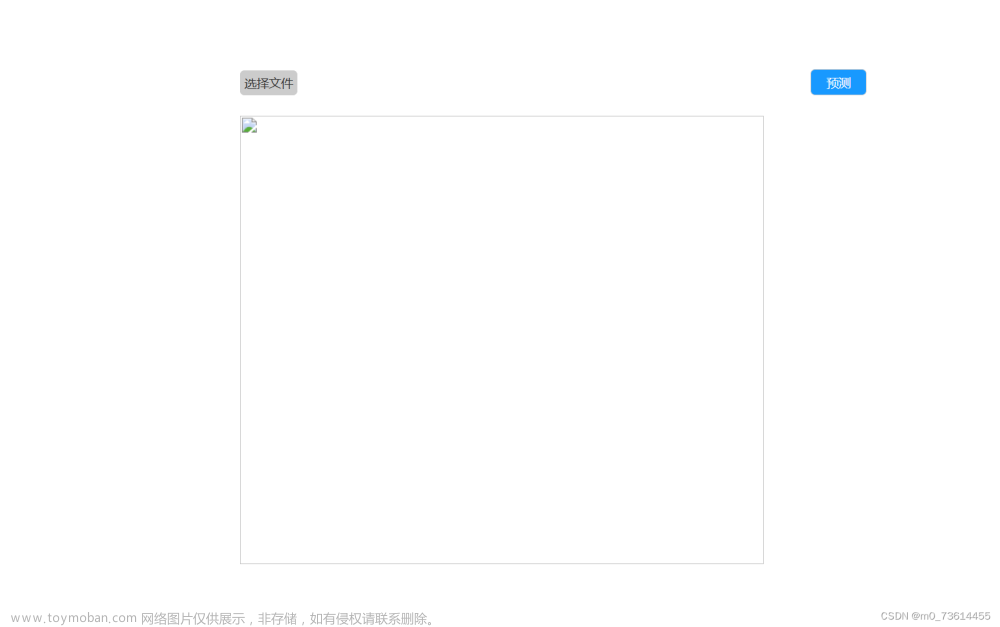1 Zinx框架总览

2 三层模式的分析

3 三层重构原有的功能 - 头文件
三层结构重构原有功能
- 自定义消息类,继承UserData,添加一个成员变量szUserData
- 定义多个Role类继承Irole,重写ProcMsg函数,进行不同处理
- 定义protocol类,继承Iprotocol,重写四个函数,两个函数时原始
数据和用户数据之间的转换;另两个用来找消息处理对象和消息发
送对象。 - 定义channel类,继承Ichannel,在getnextinputstage函数中返回协
议对象
3.1 通道层Stdin和Stdout类
通道类,派生自基础处理者类,提供基于系统调用的数据收发功能
一般地,用户应该根据处理的文件(信息源)不同而创建通道类的子类或选用合适的实用类(已经提供的通道类子类)来完成系统级文件IO
class StdInChannel :
public Ichannel
{
public:
StdInChannel();
virtual ~StdInChannel();
// 通过 Ichannel 继承
virtual bool Init() override;
virtual bool ReadFd(std::string& _input) override;
virtual bool WriteFd(std::string& _output) override;
virtual void Fini() override;
virtual int GetFd() override;
virtual std::string GetChannelInfo() override;
virtual AZinxHandler* GetInputNextStage(BytesMsg& _oInput) override;
};
class StdOutChannel :public Ichannel
{
// 通过 Ichannel 继承
virtual bool Init() override;
virtual bool ReadFd(std::string& _input) override;
virtual bool WriteFd(std::string& _output) override;
virtual void Fini() override;
virtual int GetFd() override;
virtual std::string GetChannelInfo() override;
virtual AZinxHandler* GetInputNextStage(BytesMsg& _oInput) override;
};
3.1.2 StdInChannel
bool StdInChannel::ReadFd(std::string& _input)
{
cin >> _input;
return true;
}
bool StdInChannel::WriteFd(std::string& _output)
{
return false;
}
int StdInChannel::GetFd()
{
return 0;
}
std::string StdInChannel::GetChannelInfo()
{
return "stdin";
}
AZinxHandler* StdInChannel::GetInputNextStage(BytesMsg& _oInput)
{
/*返回协议对象*/
return CmdCheck::GetInstance();
}
3.1.2 StdOutChannel
bool StdOutChannel::ReadFd(std::string& _input)
{
return false;
}
bool StdOutChannel::WriteFd(std::string& _output)
{
cout << _output << endl;
return true;
}
int StdOutChannel::GetFd()
{
return 1;
}
std::string StdOutChannel::GetChannelInfo()
{
return "stdout";
}
AZinxHandler* StdOutChannel::GetInputNextStage(BytesMsg& _oInput)
{
return nullptr;
}
3.2 协议层CmdCheck和CmdMsg类
3.2.1 CmdCheck单例模式
- 原始数据和业务数据相互函数,开发者重写该函数,实现协议
- 获取处理角色对象函数,开发者应该重写该函数,用来指定当前产生的用户数据消
- 获取发送通道函数,开发者应该重写该函数,用来指定当前字节流应该由哪个通道对象发出
class CmdCheck :
public Iprotocol
{
CmdCheck();
virtual ~CmdCheck();
static CmdCheck *poSingle;
public:
// 通过 Iprotocol 继承
/*原始数据和业务数据相互函数,开发者重写该函数,实现协议*/
virtual UserData * raw2request(std::string _szInput) override;
virtual std::string * response2raw(UserData & _oUserData) override;
/*获取处理角色对象函数,开发者应该重写该函数,用来指定当前产生的用户数据消息应该传递给哪个角色处理*/
virtual Irole * GetMsgProcessor(UserDataMsg & _oUserDataMsg) override;
/*获取发送通道函数,开发者应该重写该函数,用来指定当前字节流应该由哪个通道对象发出*/
virtual Ichannel * GetMsgSender(BytesMsg & _oBytes) override;
static CmdCheck *GetInstance() {
return poSingle;
}
std::string szOutChannel;
};
3.2.1.1 单例模式
构造全局唯一的协议对象
#include "CmdCheck.h"
#include "CmdMsg.h"
#include "EchoRole.h"
using namespace std;
CmdCheck *CmdCheck::poSingle = new CmdCheck();
3.2.1.2 * 命令识别类向业务层不同类别做分发
通过是不是命令来进行区分:if (isCmd)
Irole * CmdCheck::GetMsgProcessor(UserDataMsg & _oUserDataMsg)
{
szOutChannel = _oUserDataMsg.szInfo;
if ("stdin" == szOutChannel)
{
szOutChannel = "stdout";
}
/*根据命令不同,交给不同的处理role对象*/
auto rolelist = ZinxKernel::Zinx_GetAllRole();
auto pCmdMsg = dynamic_cast<CmdMsg *>(_oUserDataMsg.poUserData);
/*读取当前消息是否是命令*/
bool isCmd = pCmdMsg->isCmd;
Irole *pRetRole = NULL;
for (Irole *prole : rolelist)
{
if (isCmd)
{
auto pOutCtrl = dynamic_cast<OutputCtrl *>(prole);
if (NULL != pOutCtrl)
{
pRetRole = pOutCtrl;
break;
}
}
else
{
auto pDate = dynamic_cast<DatePreRole *>(prole);
if (NULL != pDate)
{
pRetRole = pDate;
break;
}
}
}
return pRetRole;
}
3.2.2 CmdMsg自定义用户信息类,继承UserData
class CmdMsg :
public UserData
{
public:
/*成员变量表示要回显的字符串*/
std::string szUserData;
/*开启输出标志*/
bool isOpen = true;
/*该消息是命令*/
bool isCmd = false;
/*要加前缀*/
bool needDatePre = false;
CmdMsg();
virtual ~CmdMsg();
};
3.3 业务层:回显类, 输出通道控制类, 日期前缀管理类
3.3.1 回显对象EchoRole
主要有init, procmsg,fini三个函数
#pragma once
#include <zinx.h>
class EchoRole :
public Irole
{
public:
EchoRole();
virtual ~EchoRole();
// 通过 Irole 继承
virtual bool Init() override;
virtual UserData * ProcMsg(UserData & _poUserData) override;
virtual void Fini() override;
};
- 容易出错的点:参数一必须是一个堆对象
UserData * EchoRole::ProcMsg(UserData & _poUserData)
{
/*写出去*/
GET_REF2DATA(CmdMsg, input, _poUserData);
CmdMsg *pout = new CmdMsg(input);
ZinxKernel::Zinx_SendOut(*pout, *(CmdCheck::GetInstance()));
return nullptr;
}
3.3.2 控制输入输出
- 写一个关闭输出的角色类,摘除输出通道或添加输出通道
- 在CmdMsg用户数据类中添加开关标志,是否是命令标志
- 在协议类中,根据输入字符串,设置开关标志和是否是命令的标志
- 在协议类分发消息时,判断是否是命令,是命令则发给关闭输出角 色类,否则发给回显角色类
class OutputCtrl :public Irole {
// 通过 Irole 继承
virtual bool Init() override;
virtual UserData * ProcMsg(UserData & _poUserData) override;
virtual void Fini() override;
Ichannel *pOut = NULL;
};
3.3.3 日期管理类
class DatePreRole :public Irole {
// 通过 Irole 继承
virtual bool Init() override;
virtual UserData * ProcMsg(UserData & _poUserData) override;
virtual void Fini() override;
bool needAdd = false;
};
4 Tcp数据适配
4.1 工厂类 - 框架头文件分析
- 产生tcp数据套接字通道类的抽象工厂类。
- 开发者需要重写CreateTcpDataChannel函数,来返回一个tcp通道对象。
- 般地,开发者应该同时创建一对tcp通道类和工厂类
class IZinxTcpConnFact {
public:
virtual ZinxTcpData *CreateTcpDataChannel(int _fd) = 0;
};
- tcp监听通道类,这是一个实体类(不建议继承该类)。
- 开发者可以直接创建tcp监听通道对象,
- 一般地,开发者应该在该类的构造函数中,指定一个tcp套接字通道类的工厂类,当有连接到来后,该工厂类的成员方法会被调用
class ZinxTCPListen :
public Ichannel
{
private:
unsigned short m_usPort = 0;
int m_fd = -1;
IZinxTcpConnFact *m_ConnFac = NULL;
public:
ZinxTCPListen(unsigned short _usPort, IZinxTcpConnFact *_pConnFac) :m_usPort(_usPort), m_ConnFac(_pConnFac){}
virtual ~ZinxTCPListen();
virtual bool Init() override;
virtual bool ReadFd(std::string & _input) override;
virtual bool WriteFd(std::string & _output) override;
virtual void Fini() override;
virtual int GetFd() override;
virtual std::string GetChannelInfo() override;
virtual AZinxHandler * GetInputNextStage(BytesMsg & _oInput);
};
4.2 tcp通道实现

4.2.1 Tcp套接字通道通信类
- tcp数据套接字通道类,继承通道类,该类也是一个抽象类,需要开发者继承该类,重写GetInputNextStage函数以指定读取到的字节流的处理方式
// h
class myTcpData :public ZinxTcpData {
public:
myTcpData(int _fd) :ZinxTcpData(_fd) {}
// 通过 ZinxTcpData 继承
virtual AZinxHandler* GetInputNextStage(BytesMsg& _oInput) override;
};
- Q: Ichannel对象读取到的数据给谁了?
- 给该对象调用GetInputNextStage函数返回的对象
AZinxHandler* myTcpData::GetInputNextStage(BytesMsg& _oInput)
{
/*返回协议对象*/
return CmdCheck::GetInstance();
}
- Q: Iprotocol对象转换出的用户请求给谁了?
- 给该对象调用GetMsgProcessor函数返回的对象
4.2.2 tcp数据套接字通道类的工厂类
- 产生tcp数据套接字通道类的抽象工厂类,开发者需要重写CreateTcpDataChannel函数,来返回一个tcp通道对象
一般地,开发者应该同时创建一对tcp通道类和工厂类
// h
class myFact :public IZinxTcpConnFact {
// 通过 IZinxTcpConnFact 继承
virtual ZinxTcpData* CreateTcpDataChannel(int _fd) override;
};
ZinxTcpData* myFact::CreateTcpDataChannel(int _fd)
{
return new myTcpData(_fd);
}
5 时间轮定时器
5.1 timerfd产生超时事件
timerfd_create()返回定时器文件描述符
timerfd_settime()设置定时周期,立刻开始计时
read,读取当当前定时器超时的次数,没超时会阻塞.
一般地,会将定时器文件描述符结合IO多路复用使用
5.1.1 测试代码
#include<sys/timerfd.h>
#include<stdio.h>
#include<unistd.h>
#include<stdlib.h>
int main()
{
int iTimerfd = timerfd_create(CLOCK_MONOTONIC, 0);
struct itimerspec period
{{5, 0},{5, 0}
};
timerfd_settime(iTimerfd,0, &period,NULL);
__uint64_t count = 0;
while(1) {
read(iTimerfd, &count, sizeof(count));
puts("time out");
}
}
 文章来源:https://www.toymoban.com/news/detail-745018.html
文章来源:https://www.toymoban.com/news/detail-745018.html
5.2 时间轮设置
单例模式文章来源地址https://www.toymoban.com/news/detail-745018.html
AZinxHandler * ZinxTimerChannel::GetInputNextStage(BytesMsg & _oInput)
{
return &TimerOutMng::GetInstance();
}
TimerOutMng TimerOutMng::single;
5.2.1 时间轮的定义
// h
class TimerOutProc {
public:
virtual void Proc() = 0;
virtual int GetTimeSec() = 0;
/*所剩圈数*/
int iCount = -1;
};
- vector存储轮的齿
- 每个齿里用list存每个定时任务
- 每个定时任务需要记录剩余圈数
- 时间轮类中要有一个刻度,每秒进一步
TimerOutMng::TimerOutMng()
{
/*创建10个齿*/
for (int i = 0; i < 10; i++)
{
list<TimerOutProc *> tmp;
m_timer_wheel.push_back(tmp);
}
}
5.2.2 时间轮的移动
// h
class TimerOutMng :public AZinxHandler {
std::vector<std::list<TimerOutProc *> > m_timer_wheel;
int cur_index = 0;
static TimerOutMng single;
TimerOutMng();
public:
/*处理超时事件,遍历所有超时任务*/
virtual IZinxMsg * InternelHandle(IZinxMsg & _oInput) override;
virtual AZinxHandler * GetNextHandler(IZinxMsg & _oNextMsg) override;
void AddTask(TimerOutProc *_ptask);
void DelTask(TimerOutProc *_ptask);
static TimerOutMng &GetInstance() {
return single;
}
};
- 移动当前刻度
- 遍历当前齿中的任务列表
- 若圈数为0,则执行处理函数,摘除本节点,重新添加
- 否则,圈数–
IZinxMsg * TimerOutMng::InternelHandle(IZinxMsg & _oInput)
{
unsigned long iTimeoutCount = 0;
GET_REF2DATA(BytesMsg, obytes, _oInput);
obytes.szData.copy((char *)&iTimeoutCount, sizeof(iTimeoutCount), 0);
while (iTimeoutCount-- > 0)
{
/*移动刻度*/
cur_index++;
cur_index %= 10;
list<TimerOutProc *> m_cache;
/*遍历当前刻度所有节点,指向处理函数或圈数-1,*/
for (auto itr = m_timer_wheel[cur_index].begin(); itr != m_timer_wheel[cur_index].end(); )
{
if ((*itr)->iCount <= 0)
{
/*缓存待处理的超时节点*/
m_cache.push_back(*itr);
auto ptmp = *itr;
itr = m_timer_wheel[cur_index].erase(itr);
AddTask(ptmp);
}
else
{
(*itr)->iCount--;
++itr;
}
}
/*统一待处理超时任务*/
for (auto task : m_cache)
{
task->Proc();
}
}
return nullptr;
}
5.2.3 添加和删除任务
5.2.3.1 添加任务
- 计算当前任务在哪个齿上
- 添加该任务到该齿对应的list里
- 计算所需圈数记录到任务中
void TimerOutMng::AddTask(TimerOutProc * _ptask)
{
/*计算当前任务需要放到哪个齿上*/
int index = (_ptask->GetTimeSec() + cur_index) % 10;
/*把任务存到该齿上*/
m_timer_wheel[index].push_back(_ptask);
/*计算所需圈数*/
_ptask->iCount = _ptask->GetTimeSec() / 10;
}
5.2.3.2 删除任务
- 遍历所有齿
- 在每个齿中遍历所有节点
- 若找到则删除并返回
void TimerOutMng::DelTask(TimerOutProc * _ptask)
{
/*遍历时间轮所有齿,删掉任务*/
for (list<TimerOutProc *> &chi : m_timer_wheel)
{
for (auto task : chi)
{
if (task == _ptask)
{
chi.remove(_ptask);
return;
}
}
}
}
5.3 定时器设置
5.3.1 定时器定义
class ZinxTimerChannel :
public Ichannel
{
int m_TimerFd = -1;
public:
ZinxTimerChannel();
virtual ~ZinxTimerChannel();
// 通过 Ichannel 继承
virtual bool Init() override;
virtual bool ReadFd(std::string & _input) override;
virtual bool WriteFd(std::string & _output) override;
virtual void Fini() override;
virtual int GetFd() override;
virtual std::string GetChannelInfo() override;
virtual AZinxHandler * GetInputNextStage(BytesMsg & _oInput) override;
};
5.3.2 定时器初始化
/*创建定时器文件描述符*/
bool ZinxTimerChannel::Init()
{
bool bRet = false; //判断成功或者失败
/*创建文件描述符*/
int iFd = timerfd_create(CLOCK_MONOTONIC, 0);
if (0 <= iFd)
{
/*设置定时周期*/
struct itimerspec period = {
{1,0}, {1,0}
};
if (0 == timerfd_settime(iFd, 0, &period, NULL))
{
bRet = true;
m_TimerFd = iFd;
}
}
return bRet;
}
/*读取超时次数*/
bool ZinxTimerChannel::ReadFd(std::string & _input)
{
bool bRet = false;
char buff[8] = { 0 };
if (sizeof(buff) == read(m_TimerFd, buff, sizeof(buff)))
{
bRet = true;
_input.assign(buff, sizeof(buff));
}
return bRet;
}
bool ZinxTimerChannel::WriteFd(std::string & _output)
{
return false;
}
/*关闭文件描述符*/
void ZinxTimerChannel::Fini()
{
close(m_TimerFd);
m_TimerFd = -1;
}
/*返回当前的定时器文件描述符*/
int ZinxTimerChannel::GetFd()
{
return m_TimerFd;
}
std::string ZinxTimerChannel::GetChannelInfo()
{
return "TimerFd"; // 名字随便起的
}
5.3.3 输出hello world
class output_hello :public AZinxHandler {
// 通过 AZinxHandler 继承
virtual IZinxMsg * InternelHandle(IZinxMsg & _oInput) override
{
auto pchannel = ZinxKernel::Zinx_GetChannel_ByInfo("stdout");
std::string output = "hello world";
ZinxKernel::Zinx_SendOut(output, *pchannel);
return nullptr;
}
virtual AZinxHandler * GetNextHandler(IZinxMsg & _oNextMsg) override
{
return nullptr;
}
} *pout_hello = new output_hello();
到了这里,关于Zinx框架-游戏服务器开发002:框架学习-按照三层结构模式重构测试代码+Tcp数据适配+时间轮定时器的文章就介绍完了。如果您还想了解更多内容,请在右上角搜索TOY模板网以前的文章或继续浏览下面的相关文章,希望大家以后多多支持TOY模板网!












